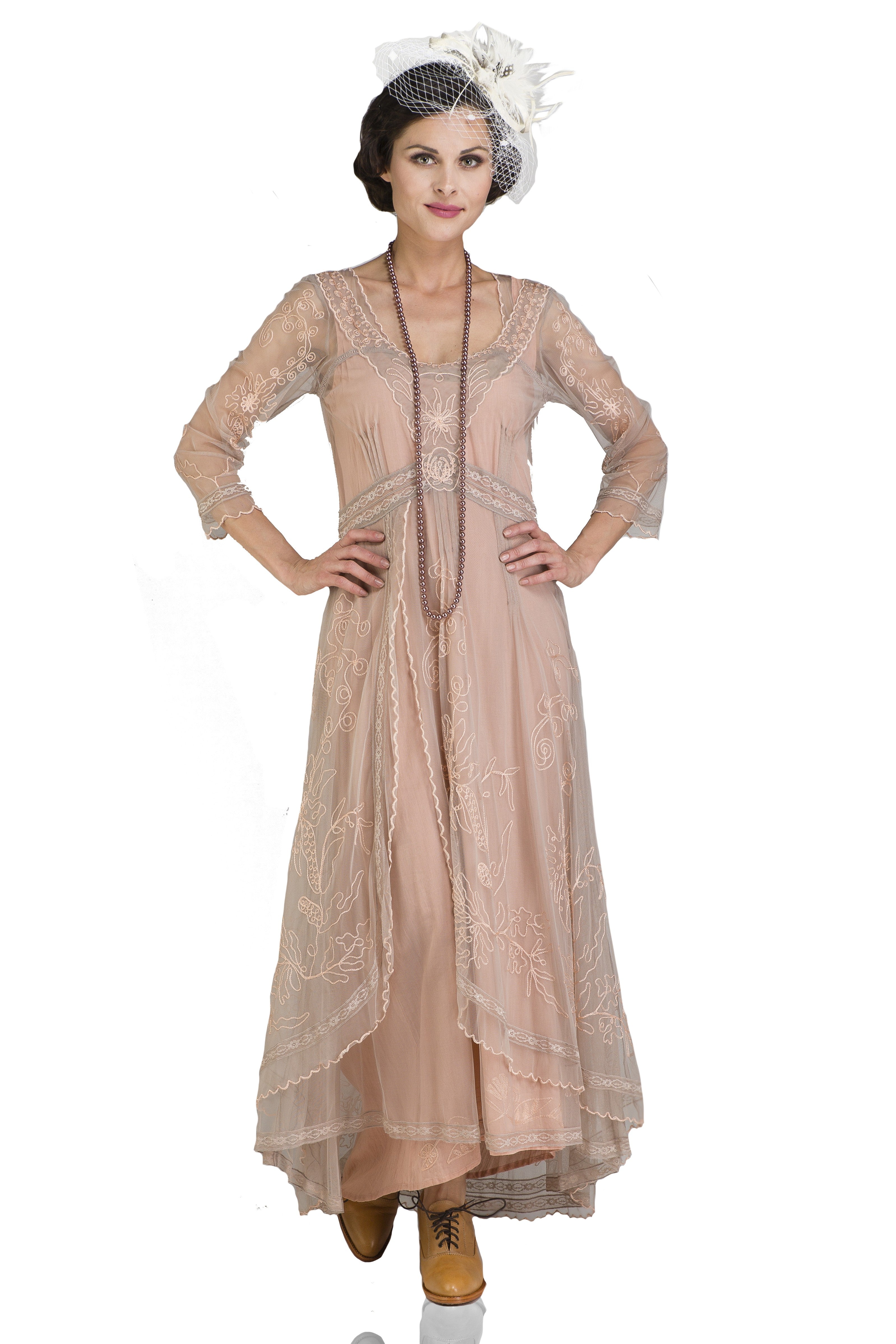The Complex History of Hoop Skirts
by Karen
The Complex History of Hoop Skirts During the Victorian Era, which lasted from approximately 1820 - 1900, strict social rules were paramount. Women were expected to maintain a prim and proper appearance while always acting respectable and demure in public. Despite this emphasis on a meek demeanor, the Victorian era clothing that women wore during this era was nothing short of outrageous by today’s standards. Rigid corsets, gigantic hoop skirts, and layers of heavy fabric resulted in garments that were incredibly cumbersome and difficult to wear. Just like the corset, the hoop skirt is an excellent example of how Victorian women used a stiff framework to manipulate their figure and exaggerate their appearance. As corsets encouraged waistlines to become smaller, hoop skirts got larger and larger. At one point, hoop skirts had a diameter of nearly 6-feet. Worn by both women and girls, hoop skirts were popular both in Victorian England and American high society during most of the 1800s. The appearance of these large, dramatic dress designs has been immortalized in historic paintings as well as culturally relevant films like “Gone with the Wind.” Hoop skirts are not only remarkable in their construction, but also have a complex history. They also are an interesting way to examine the ways in which clothing was used to dismantle the rigid class barriers that existed within Victorian society.
The History of the Hoop Skirt
In the early 1800, voluminous skirts were becoming incredibly popular among wealthy Victorian women. Victorian dresses constructed during this time created increasingly large skirts with the help of crinoline. At this time, crinoline consisted of stiff fabric that was lined in horsehair and thread made of linen or cotton. Multiple layers of heavy crinoline was used in the 1830 to construct petticoats for women who wanted their gowns to feature large skirts. Sometimes up to 6 layers of crinoline were used to create the amount of volume women wanted. Unfortunately, these multiple layers of crinoline were incredibly uncomfortable. Not only were they heavy, but they also tangled and stuck together whenever women walked around. To remedy this issue but still provide women with the extra-large skirts they so desperately desired, the extension skirt - or hoop skirt - was created. Hoop skirts were not a wholly original idea. In the 16th and 17th century, rigid “farthingales” were worn under the gowns of Spanish nobility to increase the width and volume of their skirts. Similarly, 18th century “panniers” were wide structures that greatly extended a skirt’s width. The Victorian hoop skirt is an extension and reinvention of this classic idea. Originally, materials like cane and whale bones were used to manufacture these extension skirts. The delicate nature of these materials, however, did not pair well with the heavy textiles that were used to manufacture Victorian Era gowns. These early hoop skirts broke quite easily. To remedy this issue, designers started manufacturing hoop skirts out of more durable materials. At first, thin strips of brass replaced cane. While certainly more durable, this material proved to be too rigid. As you can imagine, sitting down while wearing a metal cage was uncomfortable, not to mention nearly impossible. Flattened steel wire eventually became the material of choice when creating hoop skirts for Victorian women. This wire was durable enough to withstand multiple wears. It also allowed for a certain amount of elasticity. Women could now flatten out their skirts when getting in and out of carriages, only to have the skirt spring back to its original shape when released. This flexibility was one of the many reasons that hoop skirts made of steel wire became incredibly popular amongst the masses. This material also proved to be lightweight and more comfortable that hoop skirts in the past. These wire cages required only two petticoats, making them much lighter than the multiple layers of fabric required for original crinolines. As demand for these lightweight hoop skirts rose, supply followed. At one time, nearly 60,000 yards of steel wire was manufactured each day to create fashionable hoop skirts. Companies like Douglas & Sherwood, A.T. Stewart, and New York’s Osborn & Vincent had large factories and employed hundreds of people. Large London companies employed thousands of workers were reportedly producing up to 4,000 crinoline cages a day at one point. During the last half of the 1850s, hoop skirts reached peak popularity. This led to the release of different models and shapes of hoop skirts. The “Imperial Skirt,” the “Champion Belle,” and the “Balmoral Skirt” were all alternatives for women to choose from. The durable “Woven Extension Skirt” was also praised for its indestructability thanks to a mesh “cage” that was woven between the hoops. In the mid-1860s, the appearance of hoop skirts began to change. Rather than voluminous, symmetrical cages, women started to prefer rear trains or bustles. Instead of a full dome, skirts decreased in size in the front and increased in the back. The “Bon-Ton Skirt” was a popular option that had a form-fitting front and a large, pannier-like bustle in the back. Their popularity and mass production also lead to hoop skirts becoming more durable, comfortable, and even easier to clean. A “Winged Lace” improved upon the wire hoop skirts original design. This model had a circumference of nearly 85-inches and was designed to prevent these new, form-fitting designs from tripping up the women who wore them. They were also much easier to clean, making them a dream for women who wanted to wear them as often as possible.





















Leave a comment